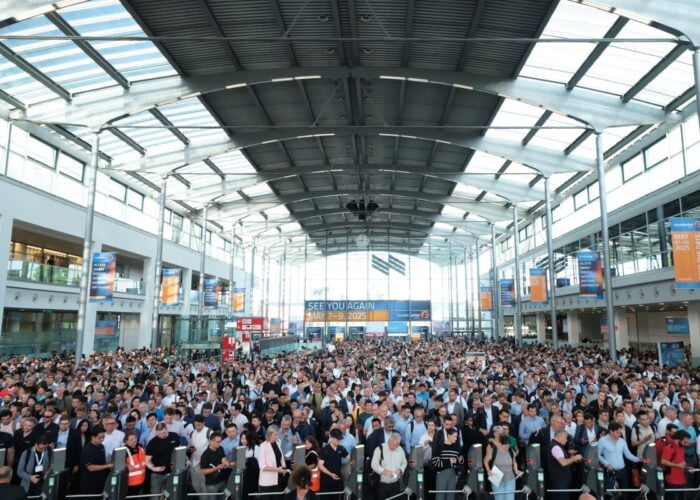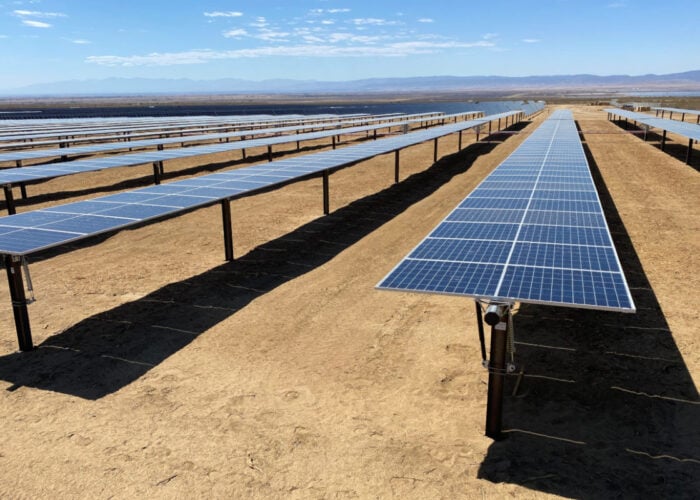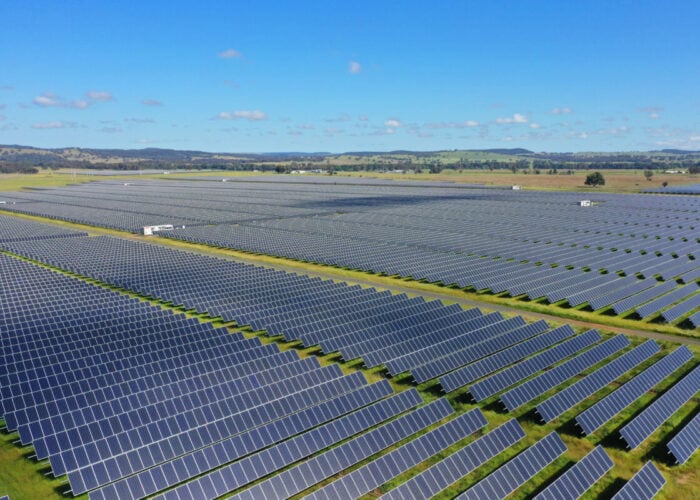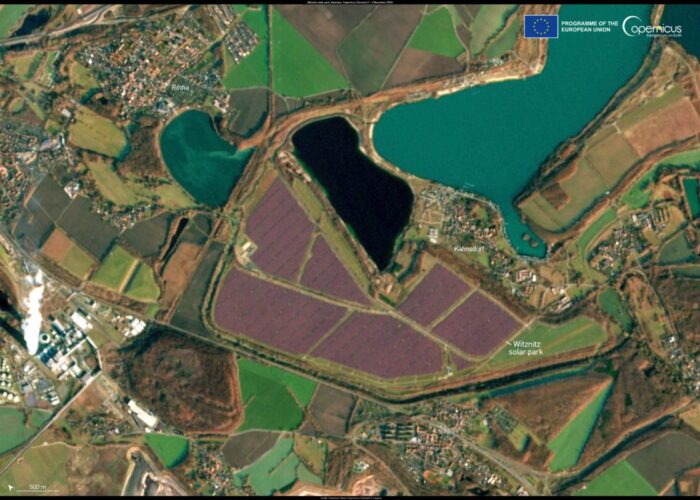
“Our best chance of establishing a viable solar industry is in partnership with China,” Brett Hallam, an associate professor and the research director for advanced hydrogenation at the University of New South Wales (UNSW), tells PV Tech Premium.
He explains that partnerships with China, much like the one signed between Australian PV cell technology startup SunDrive Solar and Chinese solar manufacturer Trina Solar, could set a precedent for Australia’s solar PV research and establish the country on the global map for the technology.
Unlock unlimited access for 12 whole months of distinctive global analysis
Photovoltaics International is now included.
- Regular insight and analysis of the industry’s biggest developments
- In-depth interviews with the industry’s leading figures
- Unlimited digital access to the PV Tech Power journal catalogue
- Unlimited digital access to the Photovoltaics International journal catalogue
- Access to more than 1,000 technical papers
- Discounts on Solar Media’s portfolio of events, in-person and virtual
Or continue reading this article for free
“SunDrive announced a partnership with Trina, which is a very, very smart way to go about things. Trina has a robust sales pipeline in Australia, so there’s less risk. If they start manufacturing in Australia, we know those products can be sold,” Hallam adds.
“It’s a bit riskier to have other entrants that don’t necessarily have consumers’ trust at a gigawatt-scale and pipeline. But module assembly is one of the easiest places to start regarding direct sales downstream.”
Chinese companies are currently exploring ways of diversifying their manufacturing supply chain, predominantly by building plants in other countries. Examples of this can be seen in Europe, where Trina Solar has received support for a 3GW manufacturing plant and Trina’s 3GW tracker manufacturing plant in Saudi Arabia, which is being pursued via its tracking arm, TrinaTracker.
This phenomenon is likely to continue amid the ongoing trade tariff wars being heightened by US president Donald Trump.
“China has already demonstrated their willingness to expand production out of China in response to introducing tariffs. This is one of the reasons for its establishment in Southeast Asian countries,” Hallam says, suggesting that the desire of Chinese companies to diversify their supply chains and partner with international research organisations could present an opportunity for Australia.
How much of the pie does Australia want?
“It is just a matter of how much of the pie Australia wants,” Hallam says, arguing that Australia could benefit from following China’s example to expand its manufacturing industry. For instance, China brought in expertise to help improve the quality of its manufacturing processes, something that UNSW had a significant role in, and that Hallam points to.
“We have all had a long history of collaboration with China, so we’ve got different technologies deployed worldwide. The method for that was to develop a process and provide them with the information,” Hallam says.
“China did this 20 years ago. They brought in expertise. UNSW was a key player in training engineers with the software that we developed here. We need to follow a model of what China has done.”
Readers of PV Tech might be aware that Hallam contributed to creating the Silicon to Solar paper, drawing on his research on cell architecture, processes for improving efficiency and steps to reduce manufacturing costs.
The report examines manufacturing opportunities across Australia’s solar PV supply chain, from polysilicon to wafers, cells and modules, and offers recommendations on how Australia can proceed. It has also been integral to the formation of programmes such as the Solar Sunshot initiative and the Solar Scale-Up Challenge.
However, with the unpredictable nature of US foreign policy at the time of writing, this approach could also end with Australia being slapped with tariffs.
The federal election looms
The US election is not the only political event that could have an impact on Australia’s manufacturing work; Hallam suggests that even existing schemes, such as the SunShot initiative, could have done more to help manufacturing.
“The amount we were hoping for as a package is much more than what the Sunshot initiative has been to date. But at least it’s a start, and it showed their intention to commit to establishing the industry here,” Hallam says.
Australia’s decarbonisation journey will be under the spotlight this year with a federal election on 3 May, which will see current prime minister Anthony Albanese of the Labor Party clash with the Liberal Party of Australia’s Peter Dutton.
Since Albanese took office in 2022, the country has seen vast support for renewable energy developments, especially solar PV, through various mechanisms introduced, such as the often-oversubscribed Capacity Investment Scheme (CIS) and the Solar Sunshot initiative.
The results of the first CIS tender saw New South Wales secure 7.1GW of energy generation, with Victoria having secured an allocation of 5GW. Western Australia was provided 2GW, and Tasmania and South Australia were granted 1.2GW each.
In contrast to Albanese’s staunch support for renewable energy developments, Dutton aims to reduce the Australian public’s energy bills by focusing more on oil and gas, coal-fired power and nuclear reactors. In the process, he would controversially lift a ban on nuclear power that has been in place since 1983 via the Nuclear Activities (Prohibitions) Act.
With many across the energy industry disputing Dutton’s claims that this will reduce household energy bills, the topic will likely become a focal point for the upcoming election, and energy policy will become politically weaponised.
Hallam comments on this: “What happens with a new potential government budget? Who knows?”
An eye to the future of solar research
Hallam is currently focused on understanding and addressing the material challenges associated with the terawatt-scale deployment of photovoltaics as part of the effort to achieve net zero by 2050. This includes tackling critical material constraints for scarce elements such as silver, essential for all industrial silicon solar cell technologies, and indium and bismuth for heterojunction solar cells.
Additionally, Hallam aims to explore methods to reduce the consumption, and environmental impact of the use of, abundant materials, like aluminium, silicon, copper, steel, glass and concrete, at the cell, module, and system levels.
“We have already run a test with about a 90% reduction in silver but using existing mainstream technology,” says Hallam highlighting how his team has been exploring mainstream screen-printed solar cells to reduce silver consumption.
“We see that once optimised, it will have the same efficiency as baseline cells but substantially less silver and at levels that can support multi-terawatt scale markets with very low barriers to market entry.”
“We’ve demonstrated about a 50% reduction in silver without loss of performance, but we expect that we’ll get that 90% reduction at the same efficiency levels once it’s optimised,” he continues, highlighting again that working with China would be to Australia’s benefit. “We are working with several companies in China around that, and we’re ready to commercialise that now.”







